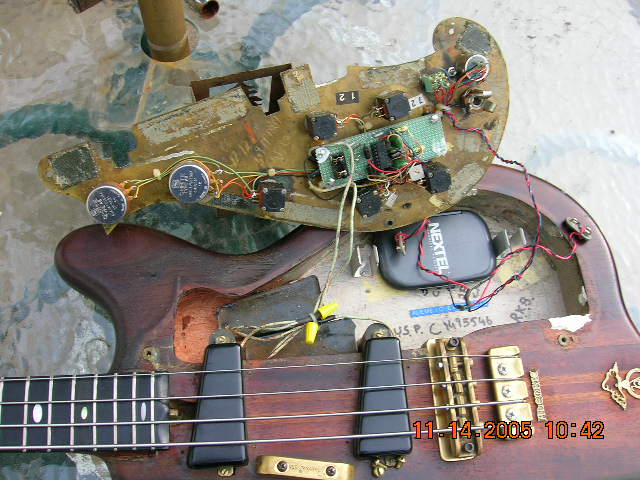| Author | Message | ||
| germansal
Member Username: germansal Post Number: 80 Registered: 8-2004 |
Hi everybody I ve noticed yesterday that my h canceller of my 79 series is moving,how can I adjust this? | ||
| gtrguy
Senior Member Username: gtrguy Post Number: 964 Registered: 9-2004 |
The little buggers are usually glued in! | ||
| terryc
Senior Member Username: terryc Post Number: 2452 Registered: 11-2004 |
Double sided adhesive tape ??? | ||
| keith_h
Senior Member Username: keith_h Post Number: 2324 Registered: 2-2005 |
I recall seeing something about using super glue because a firm tap will tend to unseat the hum canceler allowing it to be removed. I would not use a lot if I were to try it and suspect a drop or two would do the trick. Keith | ||
| sonicus
Senior Member Username: sonicus Post Number: 4625 Registered: 5-2009 |
I have been told that the humcanceller on my 73-32 is most likely fixed in place with epoxy as was likely in some of the early serial number instruments . I am under the impression that the method of hum canceler installation varied over the years as various luthiers passed by through history . In my best estimation Alembic proprietary advice is the last word on such a matter to pinpoint an effctive method of correction for the instrument in question . Wolf | ||
| keith_h
Senior Member Username: keith_h Post Number: 2325 Registered: 2-2005 |
It was my recollection of Mica saying to use super glue so it would be removable later by firmly tapping it. She has also said don't use epoxy as it would likely result in damage should the hum canceler ever need to be removed. Keith | ||
| serialnumber12
Senior Member Username: serialnumber12 Post Number: 1125 Registered: 12-2004 |
 firmly glued in place. firmly glued in place. | ||
| mica
Moderator Username: mica Post Number: 8691 Registered: 6-2000 |
We usually use superglue, but there have been people in the past that were epoxy crazy and used it here. In 1979 it was probably superglue. If it gets a good whack, the brittle bond can break. but that's good... just pull it out, add a little more glue under and replace. You could use a double sided tape like carpet tape if you like. You can also shim stuff along the edge to wedge it in place - veneers of wood, matchbooks, whatever works. This is for hum cancellers between the pickups, not like the ones mounted in the cavity like Keavin's above. | ||
| germansal
Member Username: germansal Post Number: 81 Registered: 8-2004 |
OK THANKS FOR YOUR HELP IVE SOLVED THE PROBLEM | ||
| sonicus
Senior Member Username: sonicus Post Number: 4628 Registered: 5-2009 |
Mica , I think you might of mentioned that the brass block in my 73-32 may have been installed with epoxy as well ( one of the epoxy use instruments ). When I was in the process of cleaning up the bridge I noticed that the brass block was not going to come out with any kind of gentle method. I just carefully polished with the Flitz with the brass block in place . With a little blue tape protection the job got done all safe and sane .  . . If any one else has a brass block like mine ( epoxied) this method of cleaning worked nicely for me . Wolf |